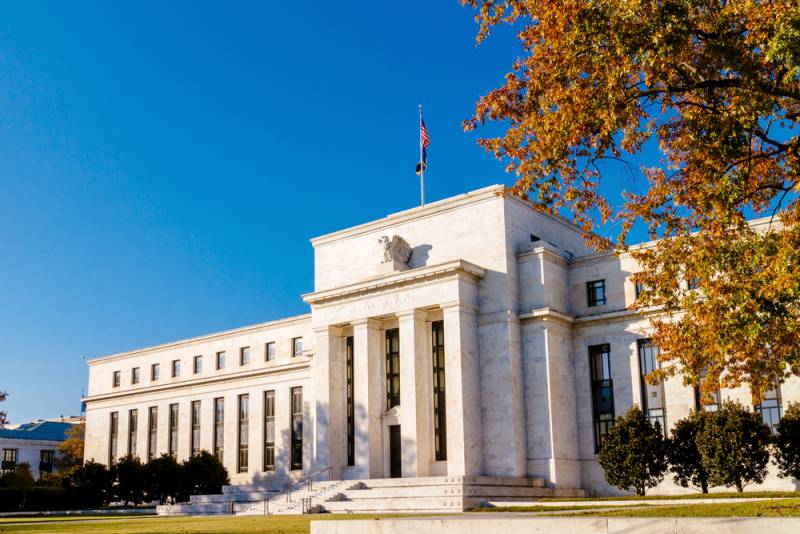A lack of consensus on a policy prescription keeps interest rates lower for longer.
The global economic environment of recent memory has been unusual to say the least. Persistently low and even negative interest rates have failed to spark an adequate revival in economic fortunes as growth remains subpar. This year has seen the commencement of easing cycles by central banks in China and India, while the European Central Bank (ECB) has ventured into unprecedented negative territory. Richard Koo, Nomura Research Institute’s chief economist, aptly stated that we have moved from an “unusual” world of persistently low and near zero interest rate policy (ZIRP) to a ridiculous one in which negative interest rate policy (NIRP) has become the norm.
As is the nature of economists, there has been widespread disagreement as to which emerging theory best explains the economic quagmire we currently find ourselves in. To better understand modern-day economics, it is important to delve into the main prevailing theories: Secular stagnation, global savings glut, as well as alternative theories such as Kenneth Rogoff’s deleveraging theory, and Robert Gordon’s long-term headwinds.
The previous chairman of the US Federal Reserve (Fed), Ben Bernanke, aptly wrote in his blog: “If you asked the person on the street, ‘Why are interest rates so low?’ he or she would likely answer that the Fed is keeping them low.” According to Bernanke, the Fed’s ability to control rates is “limited.” To reach the equilibrium real interest rate (Wicksellian rate) consistent with full employment, the Fed needs to generate the requisite amount of inflation to compensate for its inability to breach the zero lower bound.
The real interest rate reflects current returns on capital investment, and therefore, it has become the focal point of central banks. Low rates reflect sluggish economic growth, while high rates reflect a higher return on investment and are typically a sign of growth. Deficits caused by expansionary fiscal policy may also result in higher rates as savings are diverted away from private investments. Since the equilibrium real interest rate is estimated to be at record lows, Fed policy aims to set interest rates at similarly low levels that will clear savings and investment.
The conventional thought process has been that nominal interest rates cannot fall below zero, hence the term “zero lower bound.” The logic behind the zero lower bound constraint is that cash has an interest rate of zero, thus negative interest rates would create a substitution effect that causes investors to substitute bonds for cash. Central banks in Sweden, Denmark and Switzerland, in addition to the ECB have showed that the zero lower bound can be breached. They are implementing negative interest rate policy in an unconventional effort to stimulate growth.
Yet Europe has experienced little—if any—of the adverse substitution effect implied by sub-zero rates. The cash arbitrage rate can be used to explain Europe’s ability to get away with negative rates. Even though holding cash theoretically pays a zero interest rate, institutions with cash hoards too large to “fit under a mattress” incur fixed costs for storage, transport, security, insurance and lost convenience (opportunity cost). Secondly, because these costs are fixed, there are economies of scale from spreading the costs over a larger base. Thus, holding cash actually implies a negative rate, which means the real lower bound is not zero. It is actually negative, or the point where no large scale cash withdrawals will take place.
Secular Stagnation
Certainly, any discussions of zero or negative interest rate policy inevitably bring up economist Larry Summers’ resurrection of the age-old secular stagnation thesis. Alvin Hansen, in his 1938 presidential address, predicted a prolonged slump in the economy caused by excess savings over investment. This would, in turn, prevent the attainment of full employment as firms were disincentivized to invest; naturally, Hansen was wrong as an economic boom soon followed.
However, seven decades later, his thesis may just hold some water. The case for secular stagnation involves the following scenarios: output below the economy’s potential; real rates above equilibrium; and scenarios one and two lasting for a prolonged period of time. Prima facie, the thesis certainly fits with what is being witnessed today. Rates are at an unprecedented low, yet the US saw its 2015 first quarter gross domestic product (GDP) growth revised down to -0.7% against the backdrop of a 2.2% GDP growth in fourth quarter of 2014. Even with negative real rates creating ample liquidity in the system, the demand for credit remains tepid. In the US, the monetary base has increased 4.82x, yet the money supply and bank credit has only gone up 1.47x and 1.05x, respectively.
Banks’ reluctance to lend has, in effect, negated the threat of inflation. Low inflation is not a good sign here as it prevents the Fed from matching the negative equilibrium real rate.
The Global Savings Glut
Bernanke advocates a concept much akin to secular stagnation, the “global savings glut,” to explain the prolonged low growth and low interest rate phenomenon. The key difference between both theories is that Bernanke’s thesis provides a global outlook that considers the global saving-investment balance. Additionally, it also focuses on the role of government policies versus fundamental factors in creating imbalances.
The theory makes a lot of sense, especially when one views the global changes in current account balances. In the late 1990s, an excess buildup of savings in Asia and the Middle East led to significant capital inflows into the United States, which depressed interest rates. These surpluses have declined as a result of “new normal” in oil prices and China’s attempt to shift from an export to a consumption-driven economy. Bernanke believes that the correction of these imbalances should help eventually normalize global interest rates.
Alternative Theories
Notable alternative theories that seek to explain secular stagnation include Gordon’s headwinds and Rogoff’s deleveraging theory. Gordon’s thesis attributes low growth to falling potential output growth as opposed to the output gap or economic slack. The output gap is simply the difference between actual growth and growth that an economy could achieve if it fulfilled its potential. Gordon believes secular stagnation is the result not of the output gap itself, but primarily of the potential output.
Essentially, this implies the problem cannot be fixed by lowering real rates as it already matches the equilibrium. Instead, supply side factors have led to a structural slowdown that could last for a long time.
Rogoff’s deleveraging theory predicts weak growth and economic slack only as long as deleveraging takes place. Meanwhile, he believes real rates are above equilibrium due to the risk premium associated with higher credit spreads.
Considering the blatant disagreement between some of the most distinguished economists on the fundamental causes of the current economic problems, a policy prescription looks far from certain. The prevailing theory among Fed members seems to be that of secular stagnation. Thus, we are likely to see close monitoring of the real interest rate in determining the timing and pace of rate normalization.
Evidence of the widespread dispersion of equilibrium real interest rate has been strong, however, this mainly stems from the use of different econometric models. Bernanke confirms as much in his blog, noting the widespread disagreement over where the equilibrium real interest rate currently is.
Considering the Fed’s dovish bias, it makes sense to expect the Fed to opt for the path of least resistance by leaving rates “lower for longer.” A premature rate hike would not only hurt economic growth and lower returns on capital investments, but also damage the Fed’s credibility. For the moment, at least, it looks like the impending catharsis of higher rates remains some way away.
The views expressed in this article are the author’s own and do not necessarily reflect Fair Observer’s editorial policy.
Photo Credit: Alexskopje / Tanarch / Shutterstock.com
We bring you perspectives from around the world. Help us to inform and educate. Your donation is tax-deductible. Join over 400 people to become a donor or you could choose to be a sponsor.
Support Fair Observer
We rely on your support for our independence, diversity and quality.
For more than 10 years, Fair Observer has been free, fair and independent. No billionaire owns us, no advertisers control us. We are a reader-supported nonprofit. Unlike many other publications, we keep our content free for readers regardless of where they live or whether they can afford to pay. We have no paywalls and no ads.
In the post-truth era of fake news, echo chambers and filter bubbles, we publish a plurality of perspectives from around the world. Anyone can publish with us, but everyone goes through a rigorous editorial process. So, you get fact-checked, well-reasoned content instead of noise.
We publish 2,500+ voices from 90+ countries. We also conduct education and training programs
on subjects ranging from digital media and journalism to writing and critical thinking. This
doesn’t come cheap. Servers, editors, trainers and web developers cost
money.
Please consider supporting us on a regular basis as a recurring donor or a
sustaining member.
Will you support FO’s journalism?
We rely on your support for our independence, diversity and quality.









Comment